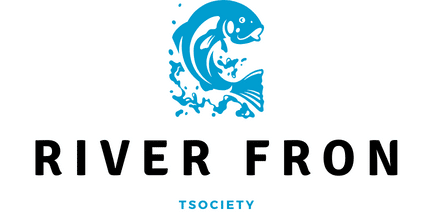What Are the Effective Leadership Strategies for a Multigenerational UK Workforce?

In today’s dynamic and hyper-competitive business environment, one of the pressing challenges leaders face is managing a multigenerational workforce. As the workplace becomes increasingly age-diverse, the integration of different generations, each with its unique set of values, skills, and ways of communication, presents both opportunities and challenges. Here, we delve into effective leadership strategies to navigate the complex alleys of a multigenerational workforce in the United Kingdom.
Understanding the Multigenerational Workforce
Before jumping into leadership strategies, it’s imperative to understand what constitutes a multigenerational workforce. A wider range of generations are working side by side than ever before, from Baby Boomers to Generation Z. Each generation brings its unique skills, experiences, and expectations to the workplace, making it a diverse but at times, challenging environment.
In the same genre : How Can UK Fitness Studios Leverage Virtual Reality for At-Home Workouts?
Baby Boomers (Born 1946-1964)
Baby Boomers, many of whom are working past traditional retirement age, are often loyal and hardworking and value face-to-face communication.
Generation X (Born 1965-1980)
Gen X employees are known for their independence, adaptability, and technological literacy.
In the same genre : Common legal problems solved with Rocket Lawyer
Millennials (Born 1981-1996)
Millennials are tech-savvy, value work-life balance, and desire meaningful work.
Generation Z (Born 1997 onwards)
Gen Z, the newest entrants to the workforce, are true digital natives, value diversity and inclusion, and thrive on innovation.
Embracing Generational Diversity in the Workplace
A diverse workforce offers a rich tapestry of ideas, skills, and perspectives that can fuel innovation and problem-solving. However, managing such diversity can be challenging as every generation has its unique work styles, communication preferences, and motivational triggers.
Recognise and Respect Differences
Recognise that each generation brings its unique strengths to the table. Baby Boomers might have years of experience and industry knowledge, while Millennials and Gen Z could offer fresh ideas and advanced tech skills. Valuing these differences can foster mutual respect and collaboration amongst employees.
Tailor Communication Styles
Communication forms the backbone of any effective team. However, communication preferences can vary significantly across generations. For instance, Boomers might prefer face-to-face or phone conversation, while Millennials and Gen Z might be more comfortable with emails, instant messaging, or social media. Leaders need to tailor their communication style to suit the preferences of their team members.
Offer Flexible Work Arrangements
Flexible work arrangements can be a powerful tool to bridge generational gaps. While Boomers might appreciate traditional 9-5 office setups, younger generations like Millennials and Gen Z value the freedom to work from anywhere and at any time.
Building a Collaborative Team Across Generations
Building a cohesive and productive team that cuts across generational lines can be a daunting task. However, with the right strategies, leaders can turn generational diversity into a strength rather than a challenge.
Foster a Culture of Mentoring
Create a culture where knowledge and skills are freely shared across generations. Encourage Boomers and Gen X to share their wisdom and experience with younger employees. At the same time, provide opportunities for Millennials and Gen Z to teach older generations about technology and digital trends.
Leverage Strengths
Every generation has its strengths. Leaders need to identify these strengths and leverage them to achieve team goals. For example, while Boomers’ industry knowledge and Gen X’s adaptability can be harnessed for strategic planning, Millennials’ tech-savvy and Gen Z’s creativity can be tapped for digital initiatives.
Implementing Generational Leadership Strategies
Leadership is about guiding and inspiring a team to achieve common goals. It is not about imposing one’s ways but adapting to the needs and preferences of the team.
Tailor Leadership Styles
Just as communication styles need to be tailored, so do leadership styles. Some employees might prefer a more direct and authoritative style, while others might thrive under a more collaborative and democratic approach.
Invest in Training and Development
Continuous learning and development are crucial for a multigenerational workforce. Leaders should provide opportunities for employees of all generations to learn and grow, whether through formal training sessions or online learning platforms.
Prioritize Inclusion
Last but not least, leaders must ensure that all employees, regardless of their generation, feel included and valued. This requires creating a culture where every voice is heard, every perspective is respected, and every employee can contribute to their fullest potential.
While managing a multigenerational workforce can be complex and challenging, it is not an insurmountable task. By understanding and respecting generational differences, leveraging generational strengths, fostering collaboration, and adapting leadership styles to suit the team’s needs, leaders can create a dynamic, inclusive, and productive workplace.
Understanding and Respecting Generational Differences
Understanding the different generational groups is crucial in managing a multigenerational workforce. It is important to be aware that the life experiences of each generation have shaped their values, attitudes, and behaviours at work.
The Baby Boomers, often viewed as loyal and hardworking, are now working beyond traditional retirement age. This group prefers face-to-face communication and values recognition and respect in the workplace. On the other hand, Generation X employees are known for their independence, adaptability, and technological skills. They value flexibility and feedback in their work life.
The Millennials are the largest generation in the workforce and are known for their tech-savviness, desire for work-life balance, and need for meaningful work. They value flexibility, diversity, and employee engagement in their work environment. Meanwhile, Generation Z, the newest entrants into the workforce, are true digital natives who value diversity, inclusion, and innovation.
Leaders need to respect these generational differences and adapt their management style to meet the unique needs of each age group. This is not about favouring one generation over another, but about creating an inclusive work environment that recognises and values the strength of each generation.
The Power of Generational Collaboration
A multigenerational workforce brings together a diverse mix of skills, ideas, and perspectives. The key to unlocking this potential is through fostering a culture of collaboration across generational lines.
One way to do this is by creating a mentoring program. Older employees can share their industry knowledge and experience with the younger generations, while the younger employees can teach the older generations about digital trends and technology. This cross-generational knowledge sharing can foster mutual respect and understanding among employees of different generations.
Another strategy is to leverage the strengths of each generation. For instance, the experience and industry knowledge of Baby Boomers, the adaptability of Gen X, the technological skills of Millennials, and the creativity of Gen Z can all be harnessed to drive innovation and business success.
A collaborative team, where different generations work together, can lead to a more dynamic and productive work environment.
Conclusion
Managing a multigenerational workforce may seem challenging, but it is an opportunity to harness a rich diversity of skills, perspectives, and experiences. By understanding the unique characteristics of each generation, respecting their differences, and fostering an environment of collaboration, leaders can leverage the strengths of each age group.
The key lies in adapting leadership and communication styles to the needs of the workforce, investing in training and development, and ensuring inclusion and employee engagement. With the right strategies, a multigenerational workforce can be a powerful asset, driving innovation and success in today’s dynamic business environment. After all, the strength of a team lies in the understanding and appreciation of its diversity. As we navigate the complex alleys of a multigenerational UK workforce, embracing this diversity is no longer a choice but a necessity.
